
Nelson Mandela University
 Dr Johann Strauss, Western Cape Depart-ment of Agriculture
Dr Johann Strauss, Western Cape Depart-ment of Agriculture Dr Ernest Dube,
Dr Ernest Dube,Nelson Mandela University
The use of cover crops as part of a conservation agriculture (CA) approach holds numerous benefits to a production system and may provide unique opportunities for grazing livestock. With only four to five suitable months for producing cash crops such as canola, barley or wheat, producers are reluctant to use winter cover crops as temporary pasture for livestock.
To test the feasibility of a dual-purpose approach, eight multi-species cover crop mixtures were compared to two control single-species pastures in terms of biomass production and fodder quality (Table 1a and Table 1b). The study was conducted over two years at the Langgewens research farm in the Swartland in the Western Cape province of South Africa. The biomass produced by the different cover crop treatments over the two production years was sufficient to sustain grazing by livestock, thus providing an excellent pasture.
Results
Compared to the two controls, the eight treatments showed good competitiveness. The cover crop treatments outperformed the two controls at multiple stages during the two seasons. The advantage of a mixed cover crop consisting of grasses, legumes and brassicas is that a more balanced diet could be obtained with the improved biomass available.
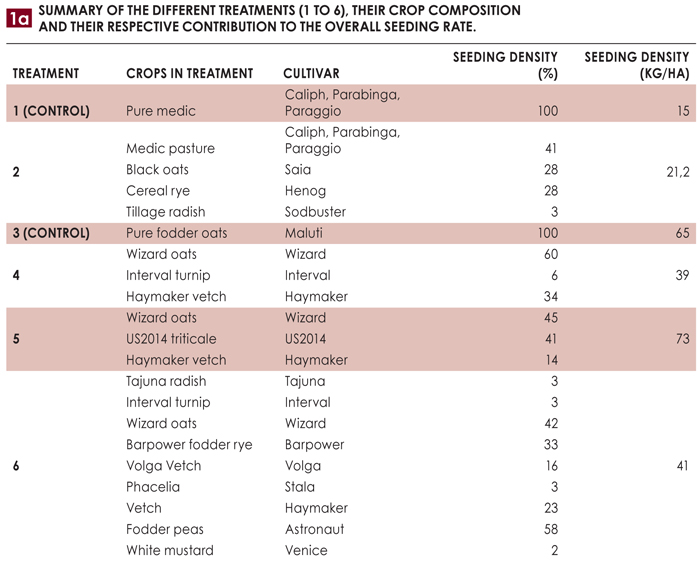
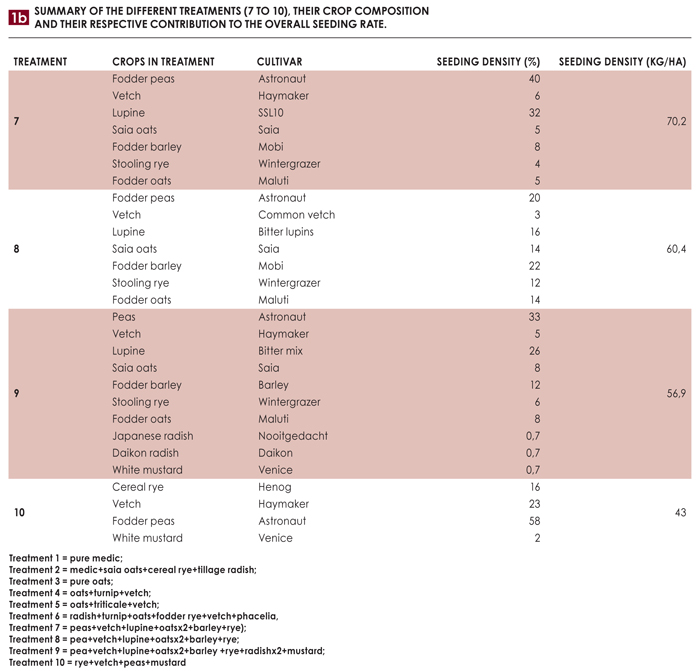 The eight mixtures had significantly higher (p<0,05) dry matter yields than the two control pastures (medic and oats) for most of the grazing events. The top-performing treatment in the 2020 season (Graph 1 to Graph 4) produced more than 9 t/ha of dry matter and more than 8 t/ha during 2021.
The eight mixtures had significantly higher (p<0,05) dry matter yields than the two control pastures (medic and oats) for most of the grazing events. The top-performing treatment in the 2020 season (Graph 1 to Graph 4) produced more than 9 t/ha of dry matter and more than 8 t/ha during 2021.
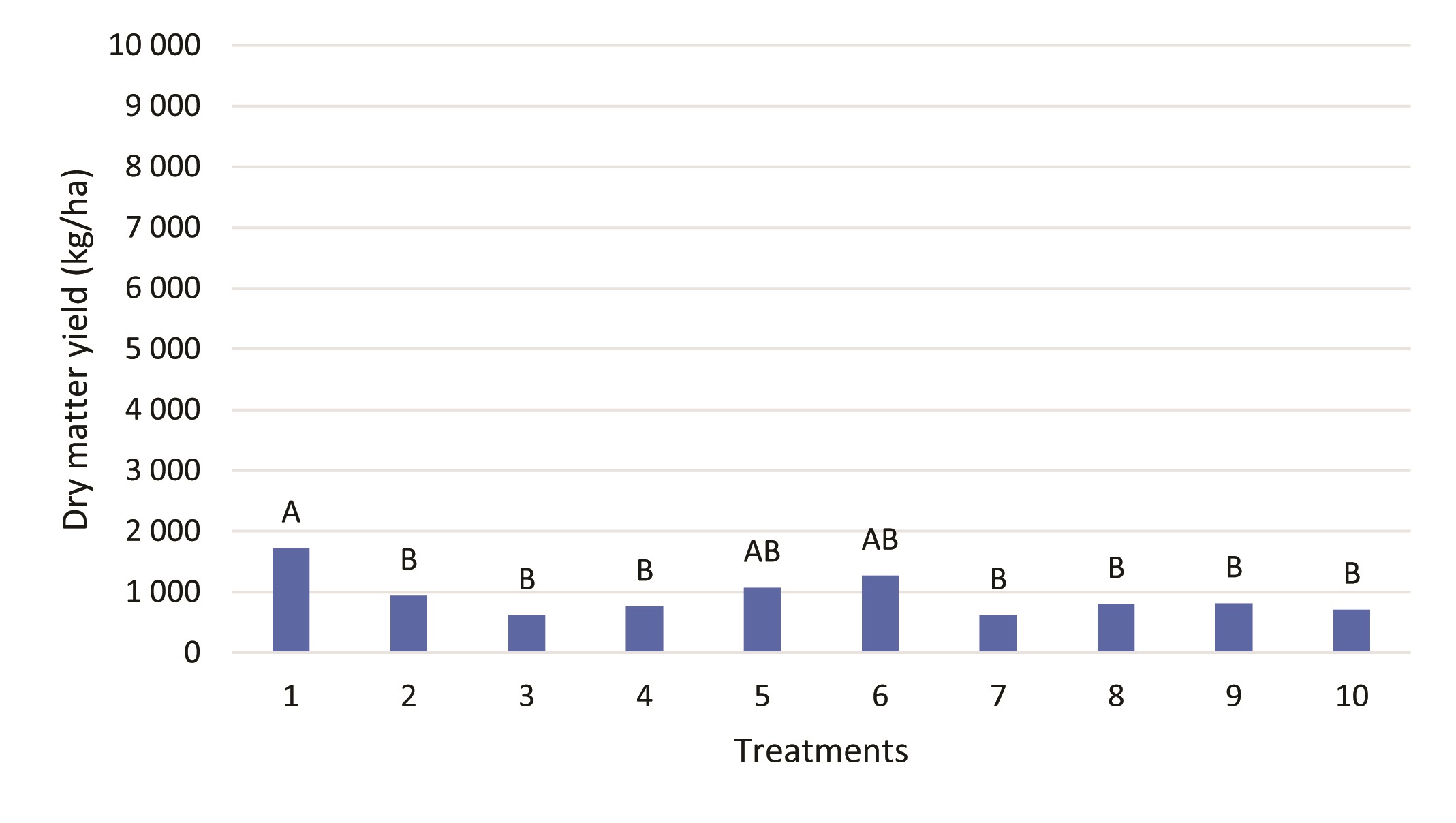
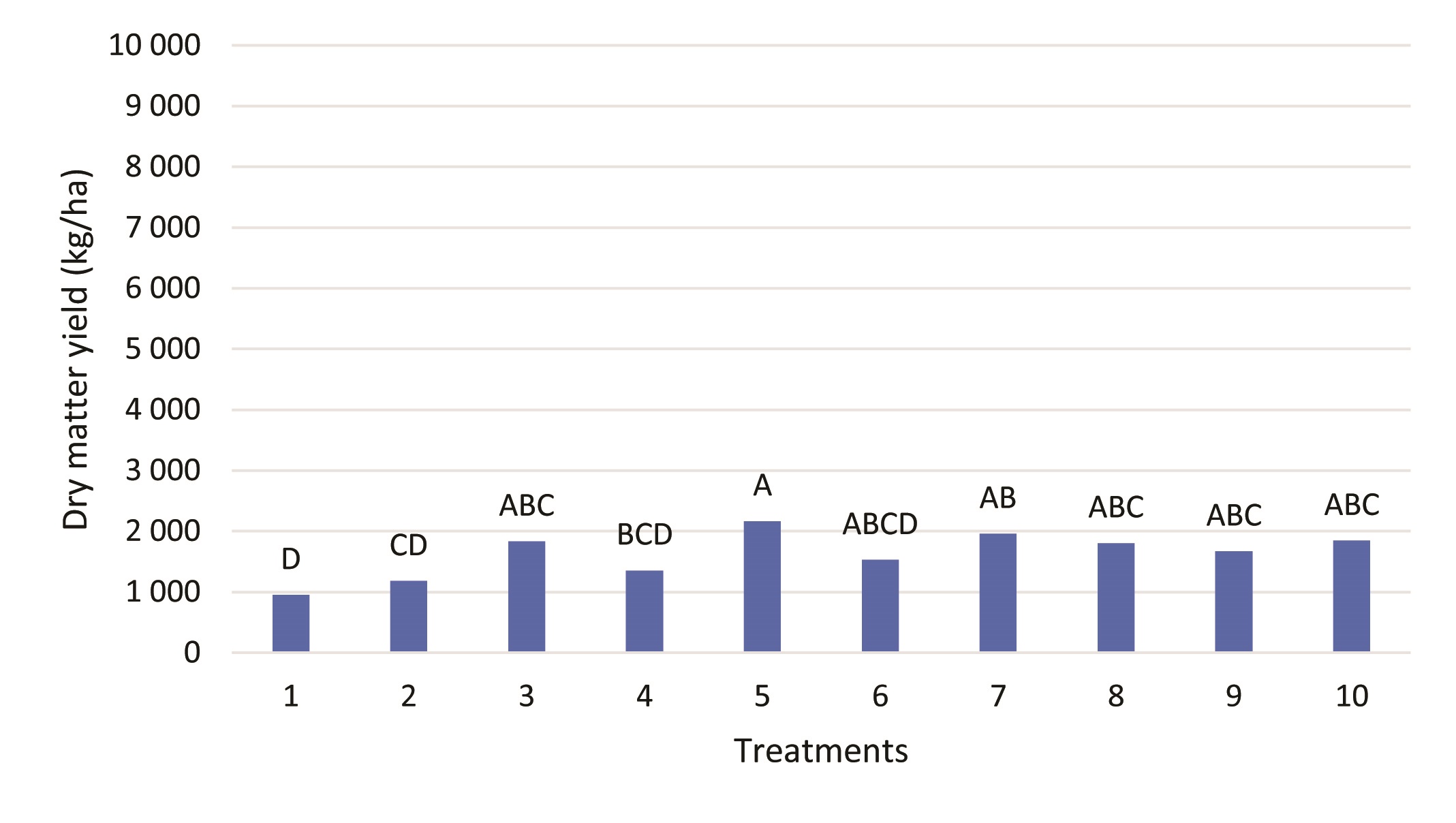
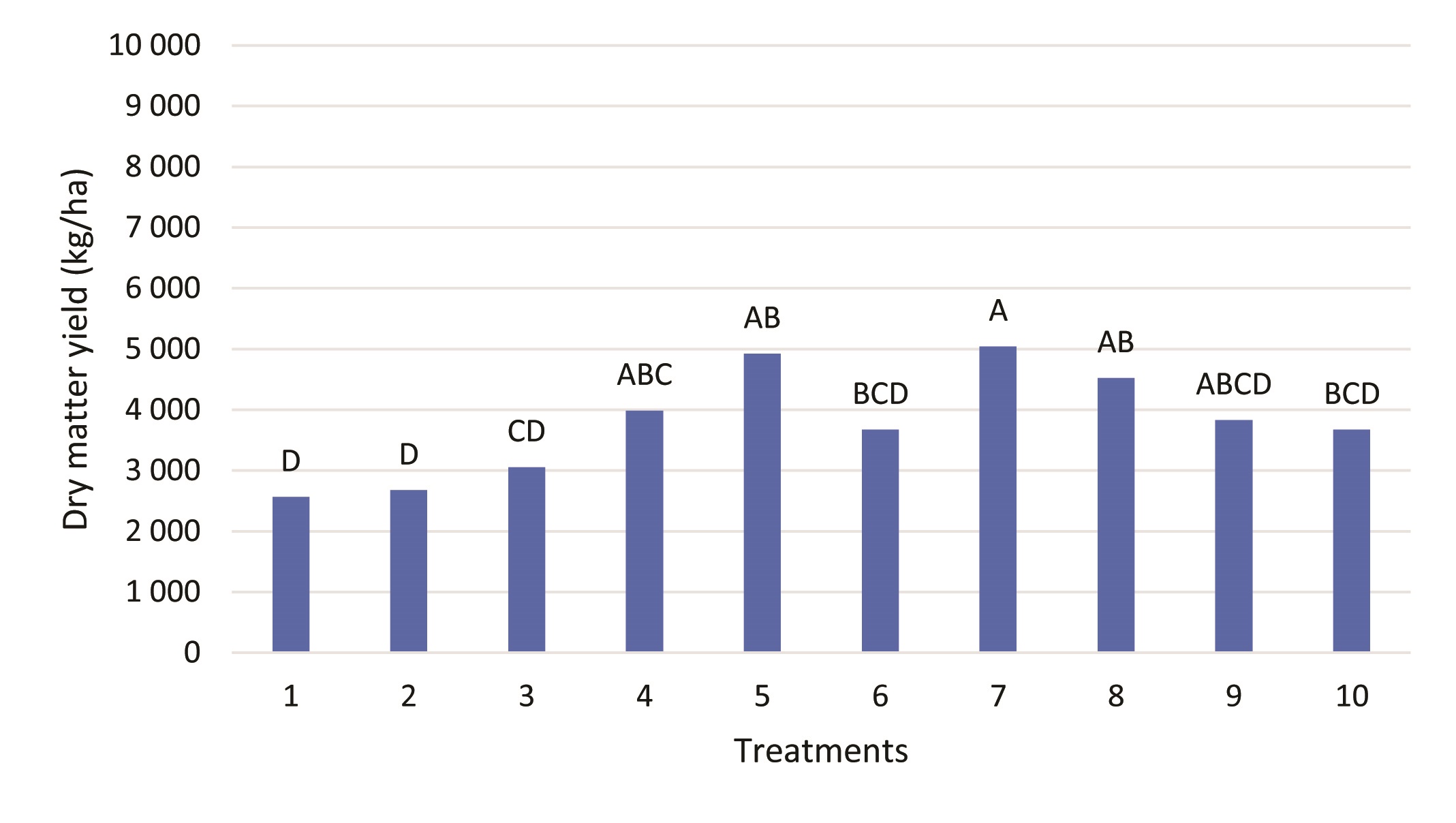
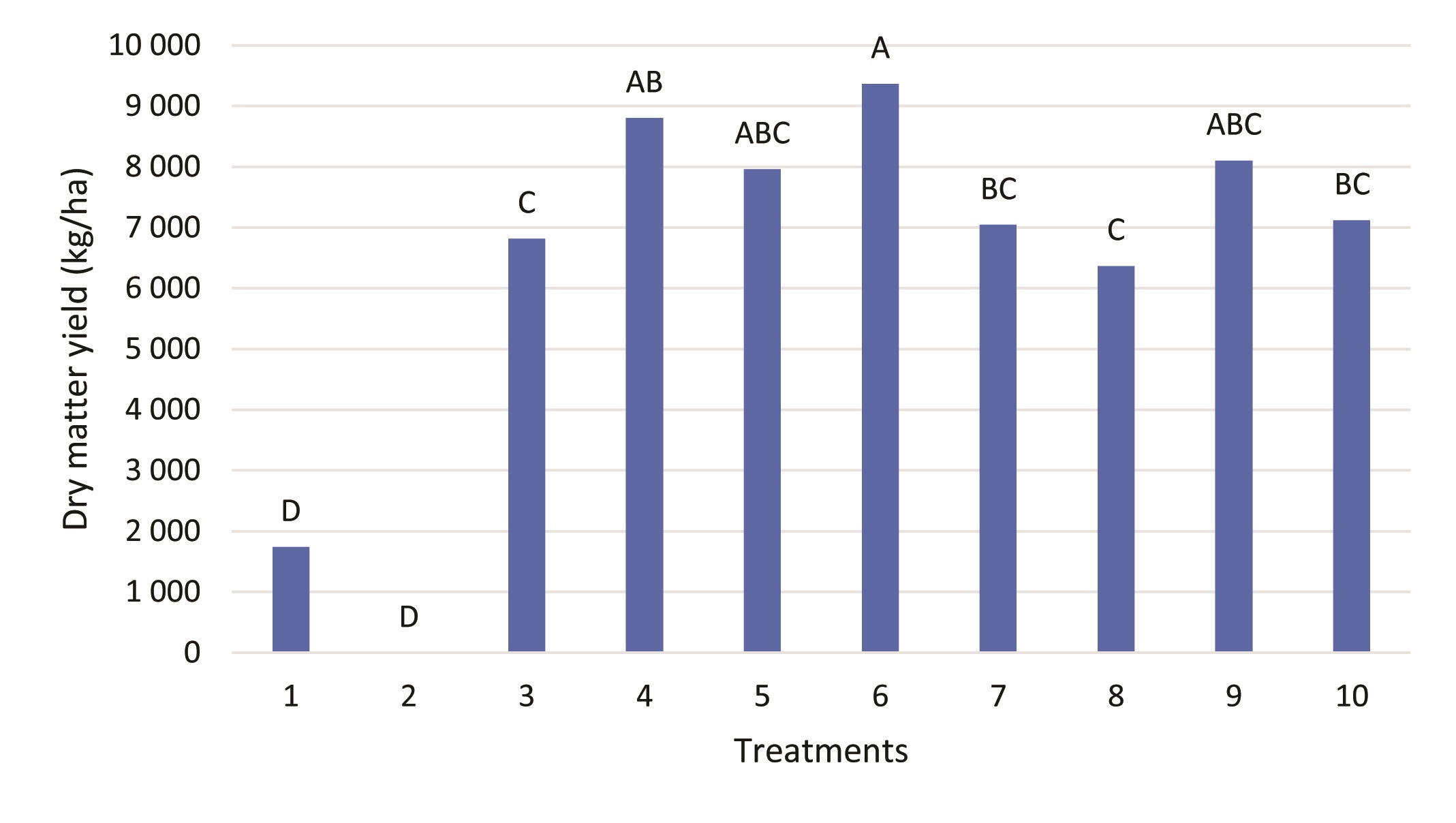
To simulate grazing at different stages during the season, cuts were made at monthly intervals following emergence. These cuts were done in adjacent plots to evaluate regrowth following a grazing event. Each treatment’s control plot was cut every month to simulate continuous grazing. The results indicated a significantly lower total biomass available to graze than less frequent grazing events.
Significant differences (p<0,05) exist between the mixed cover crop treatments. During both production seasons, the legume-based treatments produced fodder with higher protein content than cereal-based treatments. The results indicated that producers could implement mixed cover crop fodder options according to the specific biomass and forage quality that suits their particular needs. They can diversify their farming systems further by including mixed cover crops as fodder and benefit from the possible ecosystem service improvements obtained through the inclusion and profit from the grazing animals.
Nutritional value
The second part of the study focused on evaluating the cover crop mixtures’ nutritional values. The summary of the nutritional values over two seasons (Table 2) indicates that a producer can choose any of the mixtures as fodder. The choice will depend on the specific need. The cover crop mixtures serve a more diverse and balanced diet than a single species sward and have a better chance to serve producers’ needs than a single crop. In the case of crop failure, the whole crop fails in a pure sward, whereas some crop species can still survive in a mixed cover crop sward. During the make-up of each mixture, one can play with the crop composition of the pasture to obtain the most optimal combinations of all the necessary quality parameters.
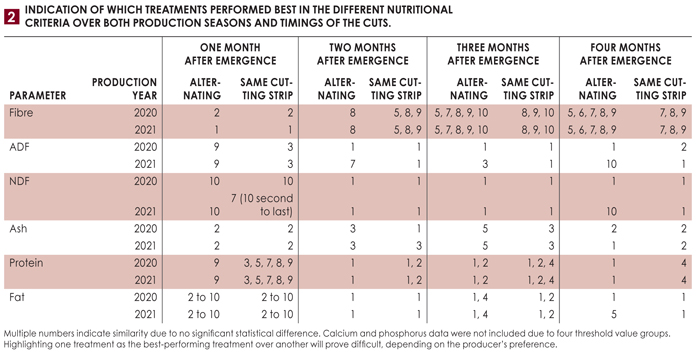 Adding nutritional knowledge empowers producers to make a more informed decision on which treatment will best fit their needs. Finding a mixture with optimum nutrition in each parameter assessed will prove difficult, as too many factors influence the quality of the fodder produced. Seasonal climatic variations also have a significant influence on the fodder quality.
Adding nutritional knowledge empowers producers to make a more informed decision on which treatment will best fit their needs. Finding a mixture with optimum nutrition in each parameter assessed will prove difficult, as too many factors influence the quality of the fodder produced. Seasonal climatic variations also have a significant influence on the fodder quality.
Including a mixed cover crop provides an opportunity for cash crop producers who want to improve the diversity of their farming system and allows for grazing to offset the cost associated with the inclusion. It must be noted that one of the production aims was to plant, maintain and utilise cover crops with low input costs. Thus, the results obtained in the biomass determinations could have been increased if a topdressing was applied, but there would be an extra input cost. A producer could use more than one of the combinations to ensure a more staggered biomass production through the season. Some mixtures showed early season vigour, and others only later.



























